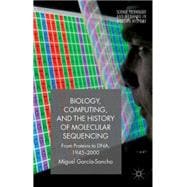When we talk about DNA sequencing, it is the relatively recent Human Genome Project and the so-called 'genomics revolution' which immediately come to mind. However, sequencing has a longer and more complex history which penetrates key issues of post-World War II biomedicine, such as the interplay of protein chemistry and molecular biology, and the growing interaction between biology and computing. In this, the first academic history of sequencing, Miguel García-Sancho follows the development of this form of molecular analysis to offer a new insight into the development of biomedicine during the second half of the twentieth century. He explores the emergence of the first protein and DNA techniques, the development of sequencing software and databases, and the commercialisation of the first automatic sequencers by the company Applied Biosystems. This vital historical perspective will allow both professionals and scholars to think rather differently about the emerging fields of bioinformatics and biotechnology, as well as the impact of biomedicine on modern society more broadly.








